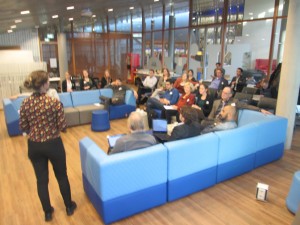Another update in the writing process of the national plan open science for The Netherlands. The good news is that we have drafted our first version and discussed this with a group of stakeholders during a second creative session. Just wait a bit, and weeks will become days will become hours, and it will be a second that our plan reaches its audience.
It is not yet that second. I can tell a bit more, though, about our approach and steps.
Creative sessions
We read, and talked, watched and listened, as I mentioned in my first weblog. Obviously the Council Conclusions and the Amsterdam Call for Action on open science form a strong basis. The first tuning of our findings took place on 7 December 2016, where we met with a group of twenty-some people in the Hive room at TU Delft Library. A wonderful report was made by Marina Noordegraaf. We found it important that we made a strong visual report, so that regardless of the result at the end, each step is worth the effort. Of course this session was, though an important one, only one of the many inputs to our plan. At this first session we took the scientific process as the central point, and all people present plotted their current and future actions on the several phases of the process.
This gave us valuable input – we could make overviews of both, i.e., of current and future actions. We used the time between Christmas and New Year’s Eve to write down a 60% version of the plan. The plan starts of course with the definition and context of open science, and ends with what will happen next after finalizing the plan early February. The middle part is the most important part: there we show what The Netherlands are doing at this moment and what we will be doing the coming years to open up the scientific process.
On 11 January 2017 we had a second meeting, with more or less the same group. Here we took the future actions and discussed why they are needed (the problem) and what they will solve (the solution), who would be action holder and the estimated time line. We had an active discussion. We learned that people preferred to talk about ambitions instead of actions, and about a coalition instead of action holders. We are now in the middle of finalizing these ambitions with the stakeholders involved.

Contributors
“No pressure, no diamonds”♥. Having three months in total for composing our national plan means that we have to make choices. Every choice is a direction, so it is good to make choices, and by doing so to make progress. One of the choices, of course upon consultation with our supervisor Ministry of Education, Culture and Sciences, was to involve (semi-) public stakeholders only. The people attending our creative sessions were from higher education- and research institutes, their libraries, funding bodies, the national library, research data centres, ICT and research(ers) organisations. Besides these, we have spoken with (representatives from) private companies, their confederation (VNO-NCW), the international organisation of STM publishers, the Open Access Scholarly Publishers Association (OASPA), Business Europe and consulted several individuals (such as researchers, teachers and health care workers) to get inspiration or answers. However, the plans or ambitions of the latter group for open science will not be covered in our national plan. The plan is the start, though, of a process where other bodies and stakeholders need to be involved.
Researchers
Talking about open science is talking about researchers, so how are they involved? In the Plan, the ambition is written down to organize a researcher-targeted conference on open science later in the year. For now we have (apart from the larger higher education- and research institutes) researchers involved via DJA (The Young Academy), PNN (“Promovendi” Network Netherlands) and we intend to get in touch with Postdoc.nl.
How open can you get?
Another choice is to decide when it is the best time to open up the result. Is that something you do right from the start, in the middle or at the end? We have chosen for a sort of compromise. The plan is not ours (us being the writing team), but theirs (them being the stakeholders involved). We want the actions, I mean ambitions, to be feasible and realistic, and showing too early what we are going to do, might have a negative effect if things mentioned have to be deleted after all. However, here at TU Delft we have just started our Year of Open, and for me Open is more than opening up the scientific process. It is also an attitude. It is about being honest, telling people what you are doing (and why), and motivating people to do the same.
The compromise
So this is the compromise: if you send an email to nationaalplanopenscience@tudelft.nl, you get an 80% version (in Dutch) of our draft plan (after 17 January 2017). We can send you an English version after 26 January 2017, that will be the 95% version. I cannot guarantee we will respond to all remarks / comments we receive, but at least there is a “shade of open”. The plan will be final and presented on 9 February 2017.
Making open science the default road. Making open science just science.
♥ Quote by Thomas Carlyle. At the end of each session, I used another quote from him:
“Go as far as you can see; when you get there, you will be able to see further”.
Published 15 January 2017; small edits 17 January 2017.
